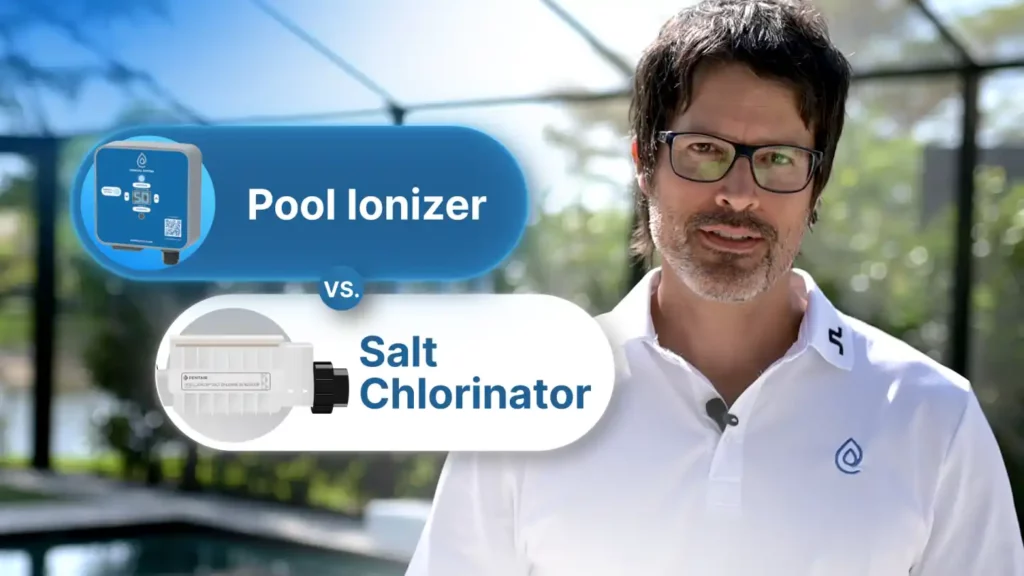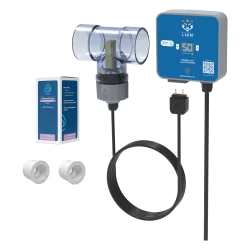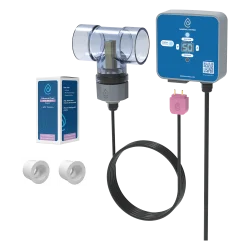This post examines the differences between pool ionizers, such as the ClearBlue Mineral System, and salt chlorinators, such as the Pentair Intellichlor. You don’t have to choose between them because they work well together. More on that in a minute.
But first, if you’re confused about what a salt chlorinator is, you’re not alone. It’s a common misconception that saltwater pools are non-chlorine pools. Unfortunately, that’s not the case.
A saltwater pool is a chlorine pool, but instead of manually adding chlorine using bleach or tablets, salt is added to the water, which is converted into chlorine using a salt chlorinator.

A pool ionizer is different. This system adds natural minerals to the water, usually a combination of copper, silver, and zinc. Minerals build up in the water and protect it against bacteria, viruses, and algae.

Let’s start with the basics. You need three things to keep pool water clean and clear: 1) A sanitizer, 2) an oxidizer, and 3) an algaecide.
The sanitizer kills pathogens like bacteria and viruses.

The oxidizer breaks down organics like lotions and sunscreens.
The algaecide prevents microscopic plants called algae from growing – in a backyard pool, this is by far the biggest job.
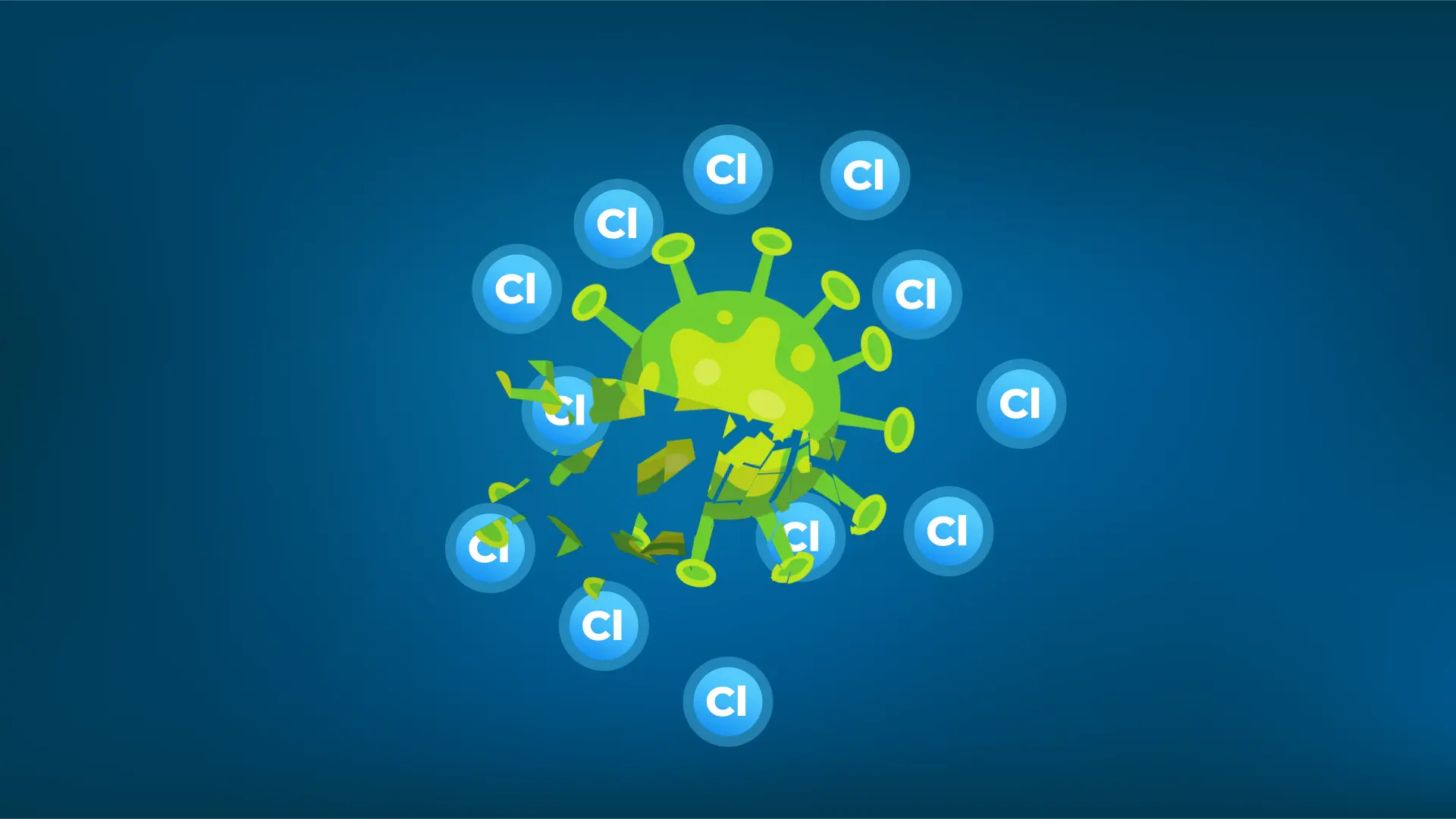
Your pool is just sitting there unused most of the time. During the day, the sunshine encourages algae growth.
The salt chlorinator generates chlorine, a jack-of-all-trades – a sanitizer, oxidizer, and algaecide.
Whereas minerals specialize in algae control. They are more effective than chlorine for that task. That’s why professional grade algaecides use minerals.
Sure, you can maintain your pool water with chlorine alone, but as the saying goes, a jack of all trades is a master of none.
Chlorine breaks down in the sun, a process called photodegradation, and it also escapes into the air, a process called off-gassing. So, if your salt chlorinator isn’t turned up high enough for the weather conditions, the chlorine can dissipate quickly, inviting algae into the water.
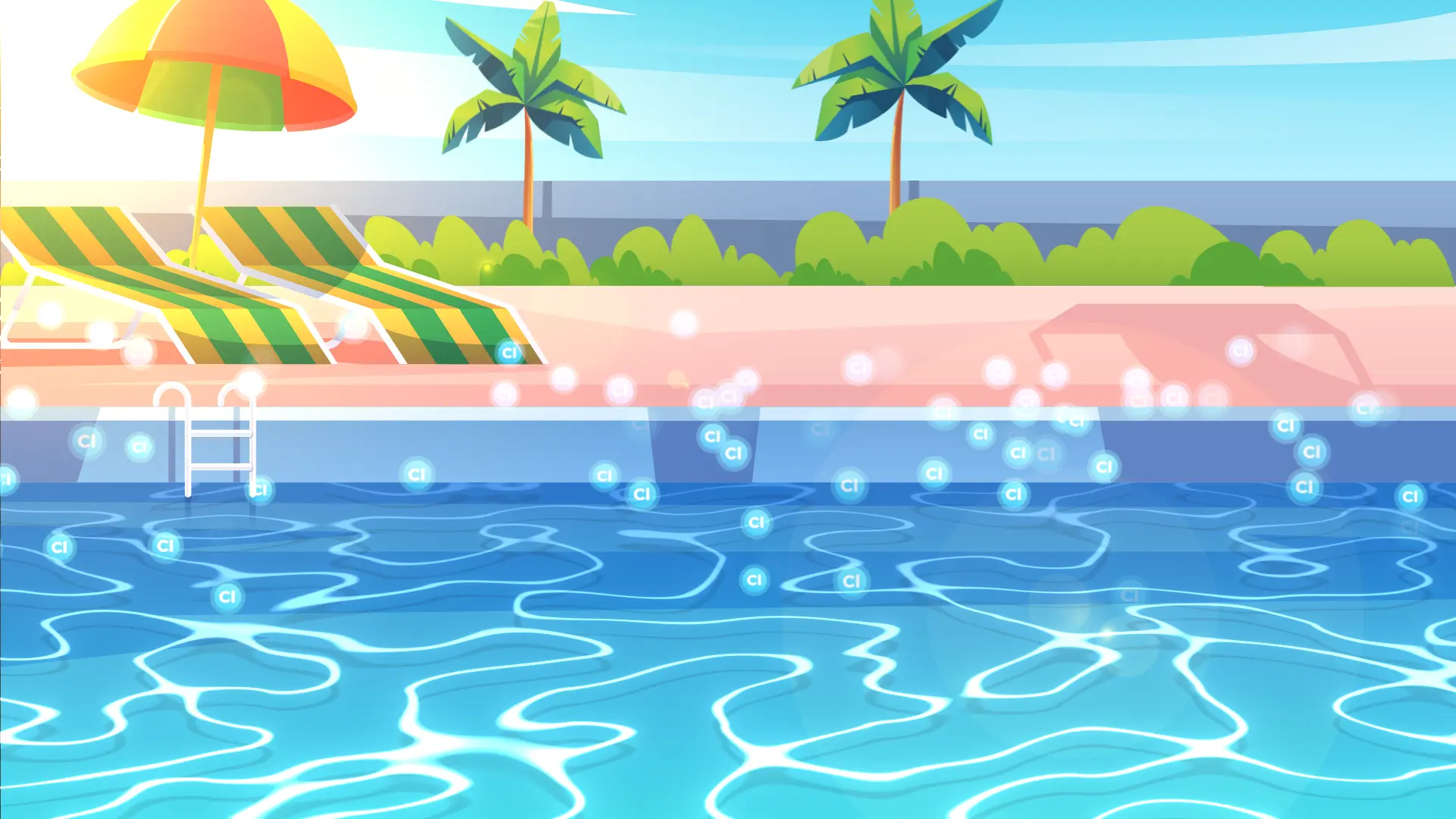
And when the algae starts marching in, it doesn’t take long before it takes over the water and turns it green. Green pools are nasty, and they’re costly and painful to correct.

If your pool is ionized with minerals, it will stay clear, even if the chlorine burns off. Minerals are stable in the water and are not subject to photodegradation or off-gassing.
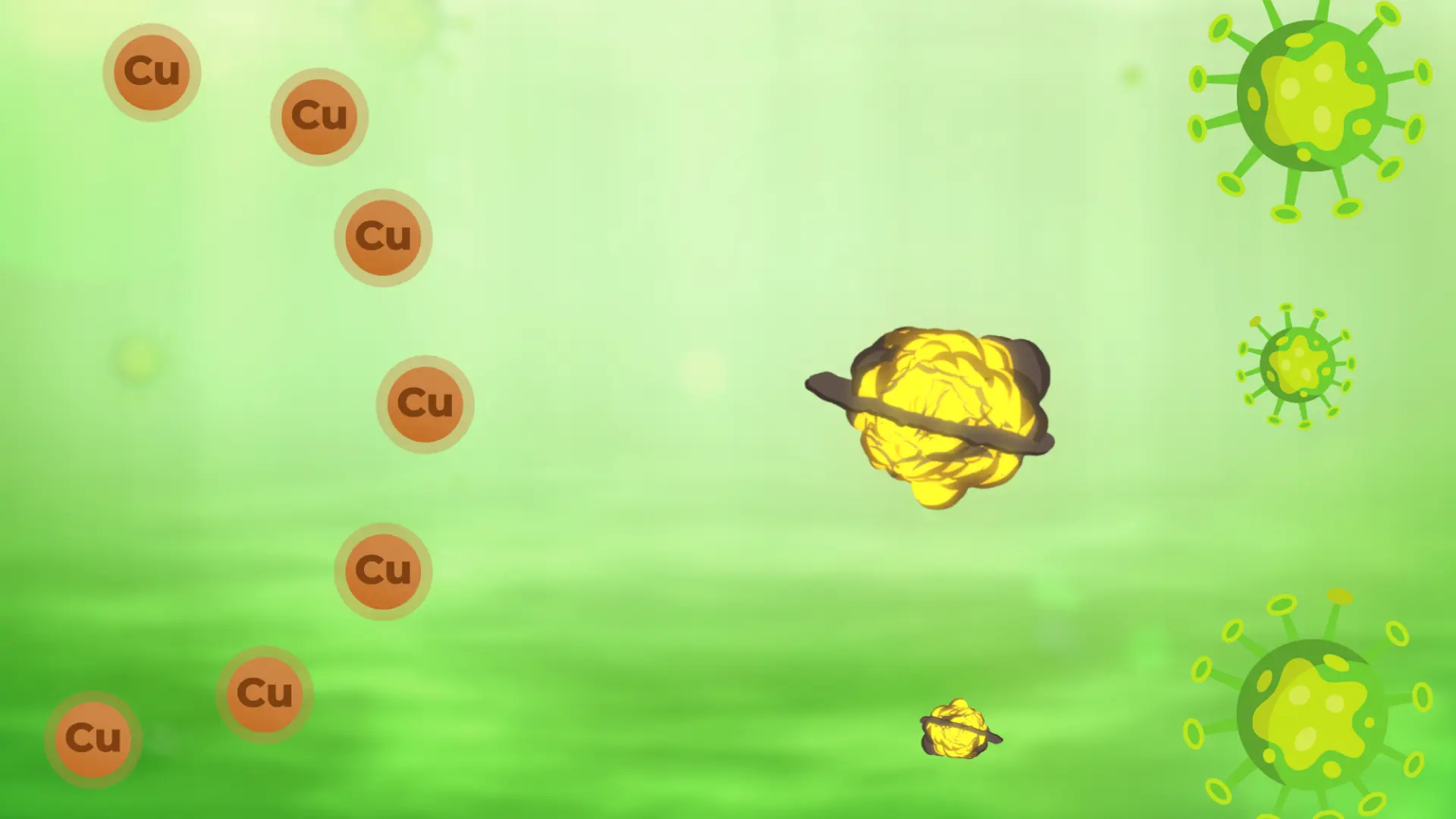
Now, with a salt chlorinator that is properly maintained, the chlorine is added continuously, so it will never dissipate completely. Using the controls, you can configure it to generate chlorine faster than it dissipates, and your water stays clear.
Here’s the problem. You probably know that chlorine is toxic in high concentrations. But that’s not the only harmful substance being generated. Salt chlorinators also produce sodium hydroxide – a poisonous and corrosive substance used in industrial processes and drain cleaner.
If you have a salt system, you’ve probably noticed how the water’s pH drifts up constantly. This is caused by sodium hydroxide production, which is a strong base with a high pH value.
If you dislike pools because you’re sensitive to chlorine, maybe you didn’t know that sodium hydroxide also irritates the skin and eyes. In a saltwater pool, both chlorine and sodium hydroxide can cause discomfort.

You may also have heard that saltwater pools can be corrosive to pool equipment, ladders, and other pool surfaces—well, again, the corrosiveness is from the sodium hydroxide as much as the salt.

So, back to my original point about using a pool ionizer AND a salt chlorinator together.
When you use a pool ionizer, you only need half as much chlorine because the minerals take care of the algae. This means you can turn down the salt chlorinator to a lower setting. So, your water will have less chlorine and less sodium hydroxide.
You won’t need to balance the pH as often, and the water will be less corrosive to surfaces and equipment.
So if you want the best water quality possible with the least irritation, cost, and maintenance, use a pool ionizer AND a salt chlorinator.
You get the salt’s softness with the minerals’ high-definition clarity while maintaining a low chlorine level and generating less sodium hydroxide.
Because chlorine and algaecide are added automatically, you’ll have more time to enjoy your pool and less time balancing pH.
You’ll even save money because you’ll need fewer chemicals and won’t have to change your salt or mineral cells as often.
-
 Mineral Lion Pool Ionizer by ClearBlue IonizerPrice range: $399.99 through $599.99
Mineral Lion Pool Ionizer by ClearBlue IonizerPrice range: $399.99 through $599.99 -
 ClearBlue Mineral System – EPA Registered Ionizer for Pools and Hot TubsPrice range: $399.99 through $899.99
ClearBlue Mineral System – EPA Registered Ionizer for Pools and Hot TubsPrice range: $399.99 through $899.99


